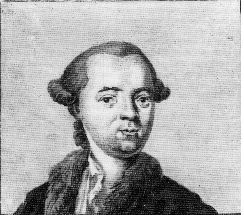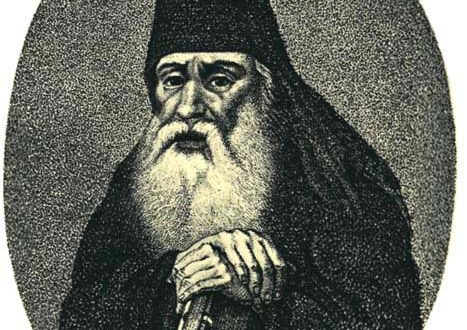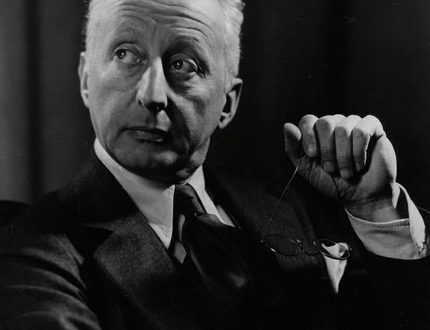
Komitas (Comitas) |
Komitas

I have always been and will remain captivated by the music of Komitas. A. Khachaturyan
An outstanding Armenian composer, folklorist, singer, choir conductor, teacher, musical and public figure, Komitas (real name Soghomon Gevorkovich Soghomonyan) played an extremely important role in the formation and development of the national school of composers. His experience of translating the traditions of European professional music on a national basis, and in particular, the many-voiced arrangements of monodic (one-voiced) Armenian folk songs, were of great importance for subsequent generations of Armenian composers. Komitas is the founder of Armenian musical ethnography, who made an invaluable contribution to national musical folklore – he collected the richest anthology of Armenian peasant and ancient Gusan songs (the art of singer-storytellers). The multifaceted art of Komitas revealed to the world all the richness of the Armenian folk song culture. His music impresses with amazing purity and chastity. Penetrating melody, subtle refraction of harmonic features and color of national folklore, refined texture, perfection of form are characteristic of his style.
Komitas is the author of a relatively small number of works, including the Liturgy (“Patarag”), piano miniatures, solo and choral arrangements of peasant and urban songs, individual opera scenes (“Anush”, “Victims of delicacy”, “Sasun heroes”). Thanks to his outstanding musical abilities and wonderful voice, the early orphaned boy in 1881 was enrolled as a graduate of the Etchmiadzin Theological Academy. Here his outstanding talent is fully revealed: Komitas gets acquainted with the European theory of music, writes down church and folk songs, makes the first experiments in choral (polyphonic) processing of peasant songs.
After completing the course of the Academy in 1893, he was elevated to the rank of hieromonk and in honor of the outstanding Armenian hymn-maker of the XNUMXth century. named after Komitas. Soon Komitas was appointed there as a singing teacher; in parallel, he directs the choir, organizes an orchestra of folk instruments.
In 1894-95. the first Komitas recordings of folk songs and the article “Armenian church melodies” appear in print. Realizing the insufficiency of his musical and theoretical knowledge, in 1896 Komitas went to Berlin in order to complete his education. For three years at the private conservatory of R. Schmidt, he studied composition courses, took lessons in playing the piano, singing and choral conducting. At the university, Komitas attends lectures on philosophy, aesthetics, general history and the history of music. Of course, the focus is on the rich musical life of Berlin, where he listens to rehearsals and concerts of the symphony orchestra, as well as opera performances. During his stay in Berlin, he gives public lectures on Armenian folk and church music. The authority of Komitas as a folklorist-researcher is so high that the International Musical Society elects him as a member and publishes the materials of his lectures.
In 1899 Komitas returned to Etchmiadzin. The years of his most fruitful activity began in various spheres of national musical culture – scientific, ethnographic, creative, performing, pedagogical. He is working on a major “Ethnographic Collection”, recording about 4000 Armenian, Kurdish, Persian and Turkish church and secular tunes, deciphering Armenian khaz (notes), studying the theory of modes, folk songs themselves. In the same years, he creates arrangements of songs for choir without accompaniment, marked by a delicate artistic taste, included by the composer in the programs of his concerts. These songs are different in figurative and genre affiliation: love-lyrical, comic, dance (“Spring”, “Walk”, “Walked, sparkled”). Among them are tragic monologues (“The Crane”, “Song of the Homeless”), labor (“The Lori Orovel”, “The Song of the Barn”), ritual paintings (“Greetings in the Morning”), epic-heroic (“The Brave Men of Sipan”) and landscape paintings. (“The moon is tender”) cycles.
In 1905-07. Komitas gives concerts a lot, leads the choir, and is actively engaged in musical and propaganda activities. In 1905, together with the choir group he created in Etchmiadzin, he went to the then center of the musical culture of Transcaucasia, Tiflis (Tbilisi), where he held concerts and lectures with great success. A year later, in December 1906, in Paris, with his concerts and lectures, Komitas attracted the attention of famous musicians, representatives of the scientific and artistic world. The speeches had a great resonance. The artistic value of the adaptations and original compositions of Komitas is so significant that it gave C. Debussy grounds to say: “If Komitas wrote only “Antuni” (“The Song of the Homeless.” – D. A.), then this would be enough to consider him a major artist.” Komitas’ articles “Armenian Peasant Music” and a collection of songs edited by him “Armenian Lyre” are published in Paris. Later, his concerts took place in Zurich, Geneva, Lausanne, Bern, Venice.
Returning to Etchmiadzin (1907), Komitas continued his intensive multifaceted activity for three years. A plan for creating the opera “Anush” is ripening. At the same time, the relationship between Komitas and his ecclesiastical entourage is increasingly deteriorating. Open enmity on the part of the reactionary clergy, their complete misunderstanding of the historical significance of his activities, forced the composer to leave Etchmiadzin (1910) and settle in Constantinople with the hope of creating an Armenian conservatory there. Although he fails to realize this plan, nevertheless Komitas is engaged in pedagogical and performing activities with the same energy – he holds concerts in the cities of Turkey and Egypt, acting as the leader of the choirs he organizes and as a soloist-singer. The gramophone recordings of Komitas’s singing, made during these years, give an idea of his voice of soft baritone timbre, the manner of singing, which conveys the style of the song performed exceptionally subtly. In essence, he was the founder of the national school of singing.
As before, Komitas is invited to give lectures and reports in the largest musical centers in Europe – Berlin, Leipzig, Paris. Reports on Armenian folk music, held in June 1914. in Paris at the congress of the International Musical Society, made, according to him, a huge impression on the participants of the forum.
The creative activity of Komitas was interrupted by the tragic events of the genocide – the massacre of Armenians, organized by the Turkish authorities. On April 11, 1915, after being imprisoned, he, together with a group of prominent Armenian figures of literature and art, was exiled deep into Turkey. At the request of influential people, Komitas is returned to Constantinople. However, what he saw affected his psyche so hard that in 1916 he ended up in a hospital for the mentally ill. In 1919, Komitas was transported to Paris, where he died. The remains of the composer were buried in the Yerevan pantheon of scientists and artists. The work of Komitas entered the golden fund of the Armenian musical culture. The outstanding Armenian poet Yeghishe Charents beautifully spoke about his blood connection with his people:
Singer, you are fed by the people, you took a song from him, dreamed of joy, like him, his suffering and worries you shared in your destiny – for how the wisdom of man, given to you from infancy people pure dialect.
D. Arutyunov





